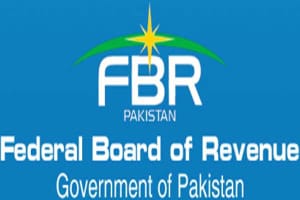UNITED NATIONS (APP) – Eradicating world hunger by 2030 will require an additional $267 billion per year for investments in rural and urban areas and in social protection so that poor people to have access to food and improve their livelihoods, a new UN report says.
The report said such a move would average $160 annually for each person living in extreme poverty over the 15 year period.
Prepared by Food and Agriculture Organization (FAO), the International Fund for Agriculture Development (IFAD) and the World Food Programme (WFP), the report, which was presented in Rome,comes ahead of the Third International Conference on Financing for Development in Addis Ababa, Ethiopia on 13 – 16 July 2015.
Entitled, Achieving Zero Hunger, the report notes that despite decades of progress, nearly 800 million people, mostly in rural areas, still lacked enough to eat while underscoring that, on average, $160 annually would enable them access to food and improved livelihoods.
Eliminating chronic undernourishment by 2030 is a key element of the second proposed sustainable development goal of the new post-2015 agenda, which will be up for adoption at the UN General Assembly in September. It is also at the heart of the Zero Hunger Challenge supported by the Secretary-General Ban Ki-moon.
FAO Director-General Jose Graziano da Silva said the message of the report was clear: “If we adopt a ‘business as usual’ approach, by 2030, we would still have more than 650 million people suffering from hunger,” which is “why we are championing an approach that combines social protection with additional targeted investments in rural development, agriculture and urban areas that will chiefly benefit the poor.”
Noting that a total investment of some $267 billion per year over the next 15 years would eradicate world hunger, Grzaiano da Silva stressed,”given that this is more or less equivalent to 0.3 per cent of the global GDP, I personally think it is a relatively small price to pay to end hunger.”
“We won’t see gains in reducing poverty and hunger unless we seriously invest in rural people,” IFAD President Kanayo Nwanze said. “Given the right kind of tools and resources, small-scale agricultural producers and rural entrepreneurs can transform struggling communities into thriving places.”
“We need a dramatic shift in thinking to help the world’s poorest break the cycle of hunger and poverty by 2030. We cannot allow them to be left behind,” WFP Executive Director Ertharin Cousin said.”We must invest in the most vulnerable and ensure that they have the tools they need not only to overcome hunger, but to enhance their resources and capabilities.”
The report noted how the international community needs to build on the successful experiences of the countries that combined investment and social protection to combat hunger and poverty in rural and urban areas.
The chiefs of FAO, IFAD and WFP, the UN’s Rome-based agencies, accompanied the report with an advocacy note, saying that the Financing for Development Conference sought to ensure all nations, especially developing countries, with the means to achieve their development objectives,including the post-2015 Sustainable Development Goals.
According to the report, a “business as usual” approach would still leave some 650 million people hungry in 2030. Conversely, a combined social protection and investment scenario using public funded transfers would lift people out of chronic hunger by ensuring that they earn $1.25 a day, which corresponds to the World Bank-determined poverty line level.
The social protection measure would cost an additional $116 billion per year, $75 billion for rural and $41 billion for urban areas. Some $151 billion in additional pro-poor investments “$105 billion for rural development and agriculture and $46 billion for urban areas” would also be required to stimulate income generation for those living in poverty. The combination of social protection and investments would bring the total to $267 billion.
While most of the investment would come from the private sector “especially farmers” it would need to be complemented by additional public sector investments in rural infrastructure, transport, health and education.
















